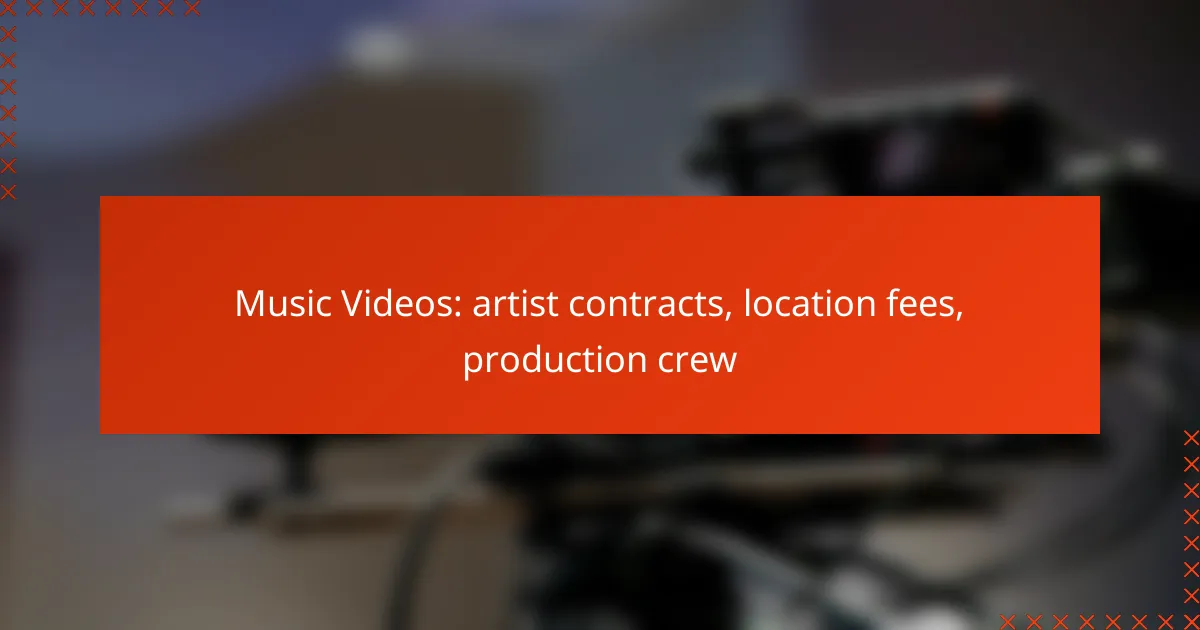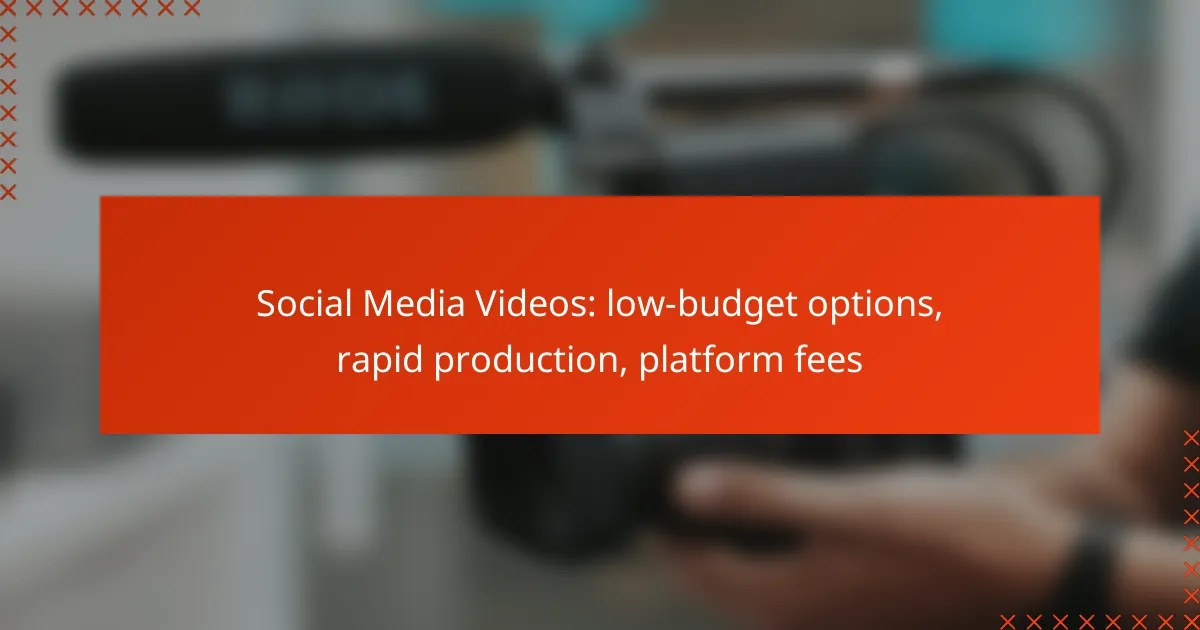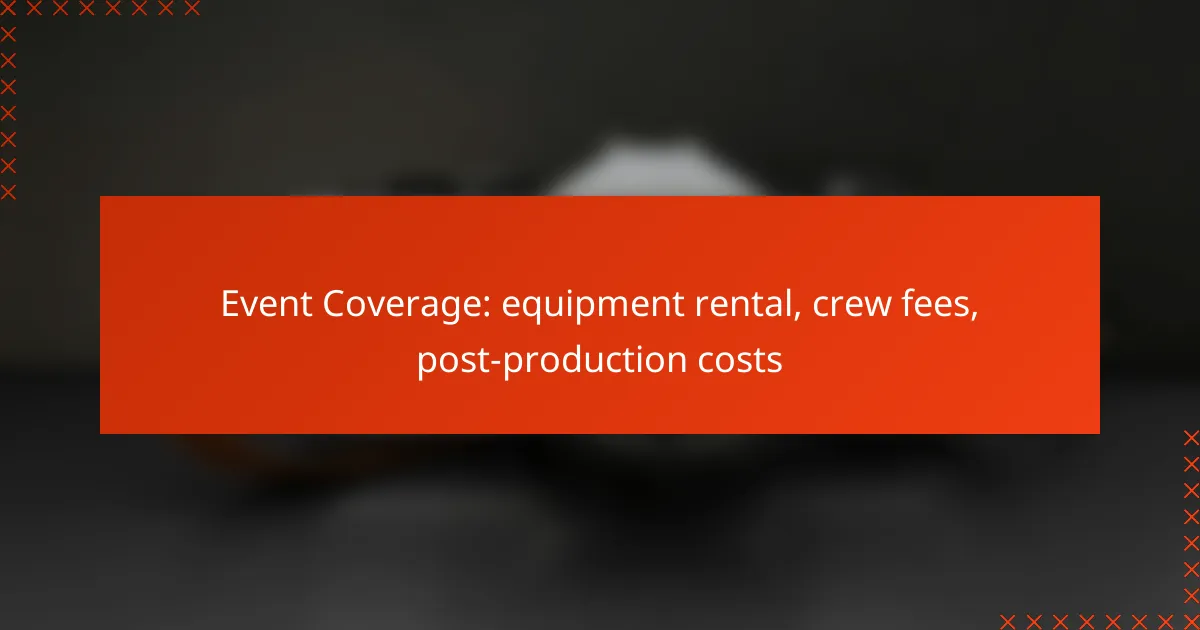Creating a music video involves navigating various contractual agreements that define the roles and responsibilities of artists, production teams, and distribution rights. Location fees can greatly impact the budget, varying widely based on the site’s popularity and features. Additionally, a skilled production crew, including a director and cinematographer, is essential to bring the artistic vision to life.

What are the key components of music video contracts?
Music video contracts typically include several essential components that outline the responsibilities and rights of all parties involved. Key areas include artist agreements, distribution rights, revenue sharing, and termination clauses, each playing a crucial role in the production and release of the video.
Artist agreements
Artist agreements define the terms under which the artist will participate in the music video. This includes details about their performance, compensation, and any specific obligations, such as promotional appearances or social media engagement. It’s vital to ensure that these agreements clearly outline the scope of work and expectations to avoid misunderstandings.
For example, an artist may agree to a flat fee or a percentage of revenue generated from the video. Clarity on payment timelines and conditions for additional compensation, like royalties from streaming platforms, is also important.
Distribution rights
Distribution rights specify how and where the music video can be shared or broadcasted. These rights can vary significantly based on the platforms involved, such as television, online streaming services, or social media. It’s crucial to negotiate these rights upfront to ensure that all parties agree on the usage of the video.
For instance, an artist may grant exclusive rights to a specific platform for a limited time, after which the video can be distributed more broadly. Understanding the implications of these rights can help maximize exposure and revenue potential.
Revenue sharing
Revenue sharing outlines how profits from the music video will be divided among the involved parties. This can include income from advertising, licensing, and merchandise sales related to the video. Establishing a clear revenue-sharing model is essential for maintaining good relationships and ensuring fair compensation.
Common arrangements might involve a percentage split based on contributions or a fixed fee for services rendered. It’s advisable to document these agreements to prevent disputes over earnings later on.
Termination clauses
Termination clauses detail the conditions under which the contract can be ended by either party. These clauses are critical for protecting the interests of all involved, allowing for exit strategies if the project does not proceed as planned. Typical conditions might include failure to meet deadlines or breaches of contract.
When drafting termination clauses, consider including provisions for notice periods and any penalties for early termination. This ensures that both parties are aware of their rights and obligations, reducing the risk of legal complications.

How much do location fees impact music video budgets?
Location fees can significantly influence the overall budget of a music video, often accounting for a substantial portion of production costs. Depending on the location’s popularity and amenities, these fees can range from a few hundred to several thousand dollars per day.
Average location fees in Los Angeles
In Los Angeles, location fees for music videos typically range from $1,000 to $10,000 per day, depending on the venue’s prestige and amenities. Iconic spots like Hollywood Boulevard or the Griffith Observatory may command higher rates, while lesser-known locations can be more affordable.
Many venues also charge additional fees for permits, insurance, and security, which can add to the total cost. It’s essential to factor these expenses into the budget when planning a shoot in the area.
Factors affecting location fees
Several factors influence location fees, including the venue’s popularity, the time of year, and the duration of the shoot. High-demand locations often have peak seasons where prices can surge, while off-peak times may offer discounts.
Other considerations include the type of production, as larger crews or more complex setups may incur higher fees. Additionally, specific requirements such as permits or special equipment can further impact costs.
Negotiation strategies for location fees
Negotiating location fees can help reduce overall production costs. Start by researching comparable venues to understand the market rate and use this information as leverage in discussions with property owners.
Be transparent about your budget and production needs, and consider offering to promote the location in exchange for a reduced fee. Building a good relationship with location managers can also lead to better deals and future opportunities.

What roles are essential in a music video production crew?
A music video production crew typically includes several key roles that contribute to the overall vision and execution of the project. Essential positions include the director, cinematographer, and production designer, each responsible for specific aspects of the video’s creation.
Director responsibilities
The director is the creative leader of the music video, responsible for translating the artist’s vision into a visual narrative. They oversee the entire production process, making decisions on the concept, shot composition, and overall style.
Directors must communicate effectively with the crew and talent, ensuring everyone is aligned with the vision. They also handle scheduling and may work closely with the producer to manage the budget and resources effectively.
Cinematographer tasks
The cinematographer, or director of photography, is responsible for capturing the visual elements of the music video. They select the camera equipment, lighting setups, and shot angles to create the desired aesthetic and mood.
Collaboration with the director is crucial, as the cinematographer must understand the artistic vision to translate it into compelling visuals. They often experiment with different techniques, such as camera movement and lens choices, to enhance storytelling.
Production designer duties
The production designer creates the visual environment of the music video, including sets, props, and locations. They work closely with the director to ensure that the design aligns with the overall concept and enhances the narrative.
Key tasks include sourcing materials, coordinating with set builders, and managing the art department. A well-designed set can significantly impact the video’s look and feel, making the production designer’s role vital to the project’s success.

What are the industry standards for music video production timelines?
Industry standards for music video production timelines typically span several weeks to a few months, depending on the project’s complexity. Key phases include pre-production, shooting, and post-production, each with its own timeline considerations.
Pre-production phases
Pre-production is crucial for setting the foundation of a music video. This phase usually lasts from a few days to several weeks and involves scriptwriting, storyboarding, location scouting, and casting. It’s essential to finalize contracts with artists and crew during this time to avoid delays later.
Budgeting is also a key component; securing location permits and negotiating fees can take additional time. It’s advisable to allocate at least 20-30% of the total production timeline to pre-production to ensure thorough planning.
Shooting schedules
Shooting schedules generally range from one to several days, depending on the video’s complexity and the number of locations. A typical music video shoot might require 1-3 days, but larger productions can extend to a week or more, especially if multiple scenes or elaborate setups are involved.
To optimize shooting time, create a detailed shot list and schedule that prioritizes scenes based on location and artist availability. This helps minimize downtime and keeps the production on track.
Post-production timelines
Post-production timelines can vary widely, typically lasting from one week to several weeks. This phase includes editing, color correction, sound design, and final approvals. A straightforward edit might take about one to two weeks, while more complex projects could require a month or longer.
It’s important to build in time for revisions and feedback from the artist and stakeholders. Aim for a clear timeline that allows for at least one round of revisions to ensure the final product meets expectations.

How do music video budgets vary by genre?
Music video budgets can differ significantly by genre, influenced by factors such as production quality, location, and artist popularity. Generally, pop and hip-hop videos tend to have higher budgets due to their commercial appeal and the need for elaborate visuals.
Pop music video budgets
Pop music video budgets typically range from tens of thousands to several million dollars. High-profile artists often invest heavily in their videos, with costs covering elaborate sets, special effects, and top-tier production crews.
For instance, a well-known pop star might allocate around $500,000 to $1 million for a music video, while emerging artists may spend between $20,000 and $100,000. Key considerations include the choice of location, which can significantly impact expenses, and the need for skilled professionals in directing, cinematography, and editing.
When planning a pop music video, it’s crucial to balance creativity with budget constraints. Avoid overspending on extravagant elements that don’t enhance the overall concept, and consider negotiating location fees or collaborating with up-and-coming talent to manage costs effectively.



